#ford GT40 Mk I
Explore tagged Tumblr posts
Text
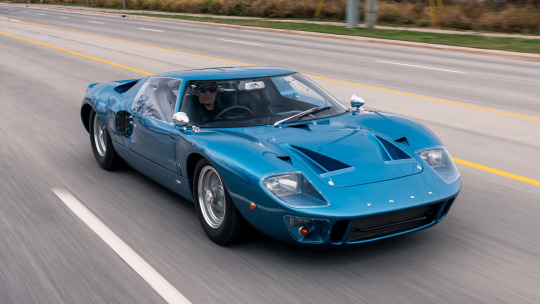
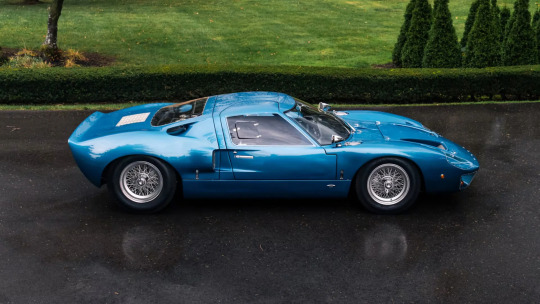
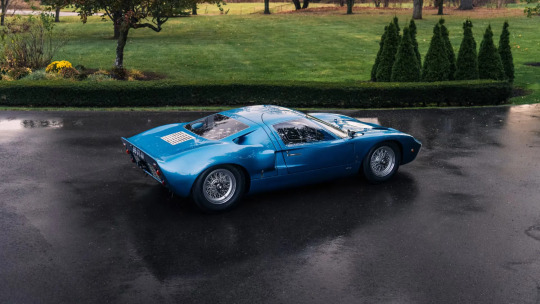
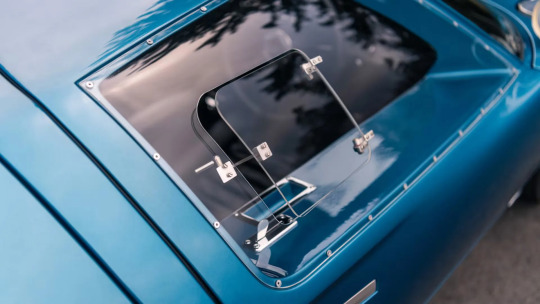
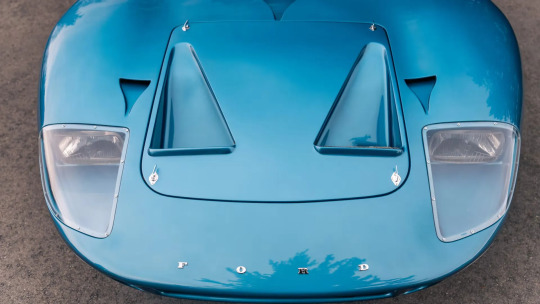
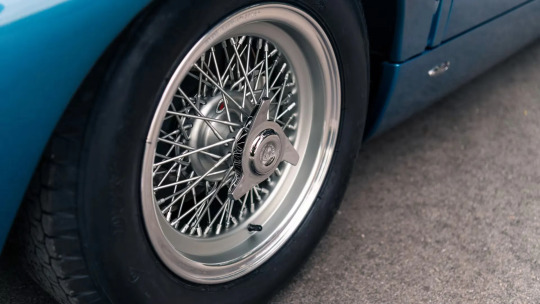
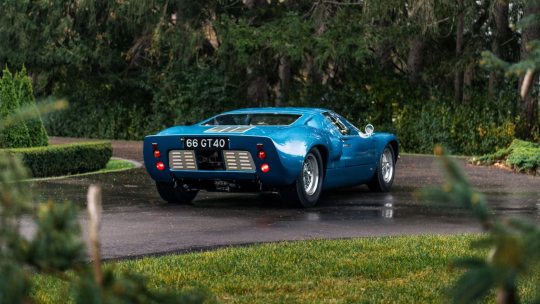

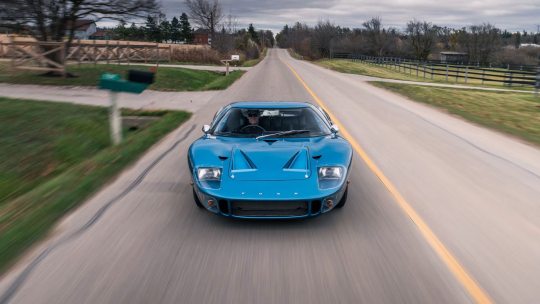
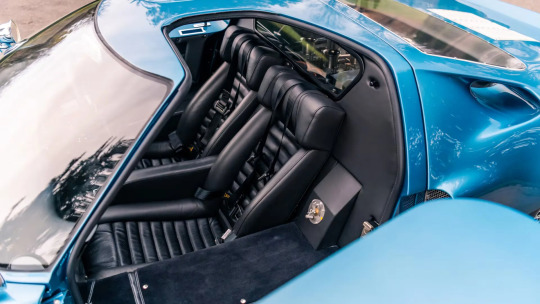
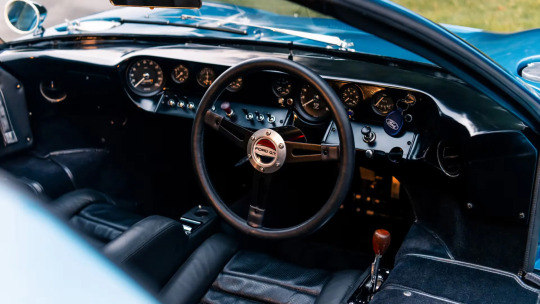

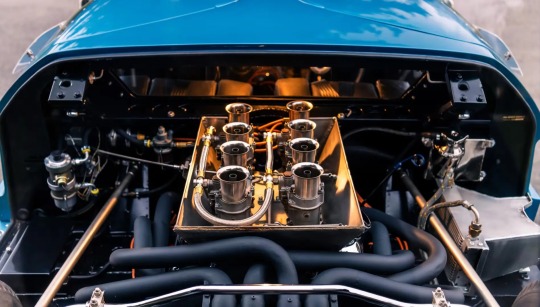
1966 Ford GT40 Mk I
Photo credit: Mecum
#art#design#luxury cars#luxury lifestyle#supercars#supercar#sportcars#sportcar#vintage cars#vintage car#ford#ford GT40 Mk I#1966#mecum
877 notes
·
View notes
Text
FORZA HORIZON 5 1964 FORD GT40 Mk I
FORZA HORIZON 5 1964 FORD GT40 Mk I Windows 11 Pro 23H2 XBOX CLOUD - EDGE
BYJMCV 2024/04
youtube
#FORZA HORIZON 5#1964 FORD GT40 Mk I#youtube#byjmcv#carpentiervantourout#forza horizon#mexique#fh5#Youtube
0 notes
Text
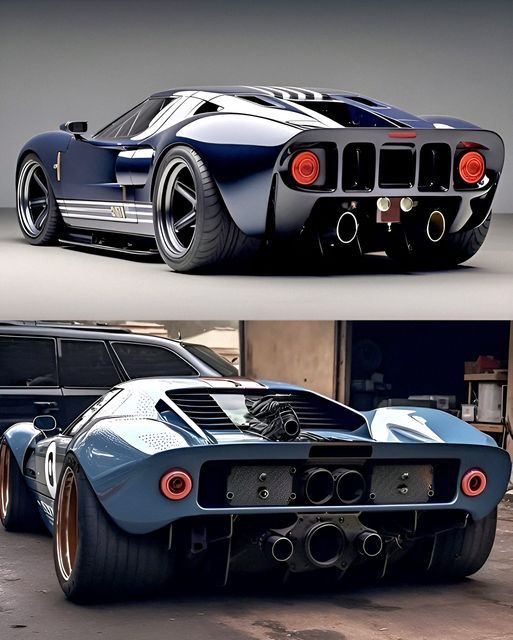
Ford GT40
The Ford GT40 is one of the most iconic cars in automotive history, renowned for its dominance in endurance racing during the 1960s. Here's the full story:
Origins:
In the early 1960s, Henry Ford II, known as "Hank the Deuce," was determined to beat Ferrari at the 24 Hours of Le Mans, the world's oldest active sports car race. Enzo Ferrari had rebuffed Ford's attempt to buy the Italian company, which led to Ford's determination to defeat Ferrari on the racetrack.
Development:
Ford tasked its newly acquired subsidiary, Ford Advanced Vehicles, with developing a car capable of winning Le Mans. The project was named GT (for Grand Touring) with the intention of building 100 road cars to homologate it for racing. Carroll Shelby, who had been involved in motorsports and had success with the Shelby Cobra, was brought in to manage the racing program.
GT40 Mark I:
The first iteration of the GT40, known as the Mark I, debuted in 1964. It was powered by a 4.7-liter V8 engine and showed promise but faced reliability issues.
GT40 Mark II:
Ford made significant improvements with the Mark II, featuring a 7.0-liter V8 engine, and refined aerodynamics. In 1966, Ford achieved its goal when the GT40 Mark II, driven by Bruce McLaren and Chris Amon, won the 24 Hours of Le Mans, marking the first time an American car had won the prestigious race outright.
GT40 Mark III:
In 1967, Ford introduced the GT40 Mark III, a road-going version of the race car. It featured a more luxurious interior and was intended for homologation purposes.
Continued Success:
The GT40 went on to win the 24 Hours of Le Mans three more times consecutively from 1966 to 1969, solidifying its place in motorsport history. Notably, the 1967 race saw an all-American victory with the GT40 Mk IV driven by Dan Gurney and A.J. Foyt.
Legacy:
The Ford GT40's dominance in endurance racing and its rivalry with Ferrari became legendary. It remains an icon of American automotive engineering and a symbol of Ford's determination to compete at the highest level of motorsport.
Modern Resurrection:
In the 2000s, Ford resurrected the GT nameplate with the Ford GT, a modern supercar inspired by the original GT40. The new Ford GT debuted in 2004 and again in 2017, paying homage to its predecessor while showcasing cutting-edge technology and performance.
441 notes
·
View notes
Text
Heartbreak in the 2.0 Sports Class at the 1966 24 Hours of Le Mans
Perhaps it's understandable given that we're coming off the Rolex 24 at Daytona, but I've been on a bit of an endurance kick lately, and I've come across a story that, while painfully, incredibly, niche, I actually found pretty fascinating. It's the heartbreaking story of a car that survived 24 fearsome hours of 1960s Le Mans...only to fail in the very last laps and miss out on the finish.
Our story takes us to the 1966 24 Hours of Le Mans, a race infamous for the battle between Ford's GT40 and Ferrari's 330 P3, however, there was another story brewing in the background: the rise of Porsche.
Ferrari had dominated the early 60s, Ford would take the late 60s with their GT40 winning four in a row, but in 1970, Porsche would breakthrough and take their first win at Le Mans before going on to become the dominant force of the 1980s.
For 1966 though, it was still early days for the Porsche project. Nevertheless, they already possessed some of the numbers that would make future Porsche efforts famous:
3 factory Porsche 906/6 LH "longtails" in the 2.0L Prototype class.
2 factory Porsche 906/6 Carrera coupes in the 2.0L Sports class.
1 privateer Porsche 906/6 Carrera coupe in the 2.0L Prototype class.
And a privateer 911S in the 2.0L GT class for good measure.
Wait a second...why so many different classes? Why do most of those cars seem to be the same model? Why is one Carrera 6 in the Prototype class while the other two are in the Sports class?
Well, the short answer is that old school Le Mans was complicated.
These days there's a clear distinction between classes: Hypercar is the fastest, LMP2 in the middle, and then GTs. Back then though, it was more of a chart - there were Prototypes, Sports Cars, and GT cars.
Prototypes were dedicated racing machines, Sports Cars, meanwhile, were a bit of an odd area, in that there was a 50-car homologation and these cars needed to have all the equipment necessary to be road legal (but as far as I can tell, there was no requirement to actually sell 50 road cars or anything, not yet at least). GT cars, meanwhile, were the actual sports cars for the road modified for racing use.
The other axis of the chart, meanwhile, is displacement. For 1966, there were 1.15L entries, 1.3L entries, 1.6L entries (though none showed up), 2.0L, and then we skipped all the way up to the 5.0L and the 5.0L+ classes.
In Porsche's case, all their cars were powered by a 1991cc Flat-6, meaning that they conformed to the 2.0L class in Prototype, Sports, and GT.
As for the 906, well, they produced the 50 906 Carrera 6s necessary for homologation, but for Le Mans, they brought the longtails. The 906/6 LH, with a monstrous rear overhang - I don't typically use pictures in these blogposts because of image rights, but look up a picture of it, it's hilarious - streamlined specifically for the mighty Mulsanne straight.
So, these 906/6 LHs were leading the charge, and they were up against a trio of Dino 206 prototypes - with Ferrari's 1986cc V6 - but our story focuses on the 906 Carrera 6s.
The #33 Porsche driven by American Peter Gregg and Swede Sten Axelsson, and the #58 driven by Germans Gunter Klass and Rolf Stommelen.
These were, quite literally, the only entries in the 2.0L Sports class. Ford had five GT Mk. 1s (in addition to their eight Prototype Mk. 2s and a sixth GT MK. 1 that didn't make the race) but those were in the 5.0L class, meaning that they weren't competing with Porsche.
Not that it mattered, considering that none of the Mk. 1s finished the race.
So yeah, quite literally two cars competing for the win, and they were strong too.
With the big cars falling away one by one, the Porsches were getting closer and closer to the front, and all five of the factory Porsche System Engineering entries were running in the top then. Thus, as Ford was planning their three-car photo finish for the overall win, Porsche was planning on a five-car photo finish just behind them.
Then...disaster struck.
Shortly after his last pitstop, Peter Gregg, then in seventh place, started experiencing an engine issue.
This must've been within the last hour of the race, probably forty-five to thirty minutes left, and the #33 car had completed a mighty 321 laps, but they were failing so close to the end of the race. In an attempt to make the finish, Peter Gregg parked the car in the pits and waited for the clock to tick down and the Fords to cross the line, figuring that he could at least nurse the car home for one final lap.
The #58 Porsche was still out there, making laps and taking the class lead as well as seventh place overall, but with the Germans on 330 laps and the next car on track being a Ferrari 275 GTB car in the 5.0L GT class on just 313 laps, Gregg could still finish in the top ten at Le Mans and be part of a five-car Porsche photo finish.
So, on the last lap, Peter Gregg tried to restart the car and complete one final lap...but it wouldn't turn over.
He missed the photo finish, and he missed the finish completely.
321 laps done, but he couldn't get it over the line to finish the race.
Thus, Porsche had to content themselves with a four car 4-5-6-7 finish, while Peter Gregg and Sten Axelsson earned the heartbreaking distinction of retiring of engine issues...24 hours into the race.
With none of the GT40 Mk. 1s making the finish and all three Dinos out early in the race, this means that the Klass/Stommelen car was the only Sports entry of any kind to finish the 1966 24 Hours of Le Mans.
So yeah, Peter Gregg and Sten Axelsson...they were on for a class win and a photo finish for Porsche, only to run into a heartbreaking engine issue at the very end of the race. From class lead and seventh overall to a DNF.
To add insult to injury...that one 911 did make the finish, completing 284 laps for a 14th place finish.
Less laps but...they finished the lap that counts: the last one.
17 notes
·
View notes
Text

The fourth of only seven continuation Mk IV GT40s (red car). A faithful recreation of one of the most important American cars ever built, with assistance from Carroll Shelby, Dan Gurney, Phil Remington, and Edsel Ford II
500 bhp, 427 cu. in. V-8 engine with dual four-barrel Holley carburetors, model T-44 four-speed manual transaxle, front and rear independent suspension with coil springs and shock absorbers, and four-wheel ventilated disc brakes. Wheelbase: 95 in.
Perhaps the most significant post-war American race car ever produced was Ford’s Mk IV GT40, and it is nothing short of a racing legend. It was the ultimate development of the GT40 platform, and it took the fight straight to Ferrari, dominating a field that included the Ferrari 330 PF and the Chaparral 2F, as well as its predecessors, the GT40 Mk I and Mk IIB.
As history would reveal, the Mk IV would only be campaigned in two races, at the 1967 12 Hours of Sebring, where Mario Andretti and Bruce McLaren piloted a Mk IV to victory, and at the 1967 24 Hours of Le Mans, where Dan Gurney and A.J. Foyt outperformed all to the checkered flag and won the Index of Performance for the most efficient car.
That victory is the only all-American outright win of an American-built chassis, engine, team, and drivers at the fabled Le Mans 24-hour endurance race. Due to the Mk IV’s unparalleled performance, the FIA quickly relegated the Mk IV to racing extinction by outlawing any prototype car that had larger than three-liter motors.
As only 12 original chassis were built, with 10 surviving, the existing original Mk IV GT40s are prized possessions of their caretakers. They seldom change hands and are rarely seen or heard in action. Such is the case with the most desirable cars in the world, as there are not enough original examples available for purchase by enthusiasts.
2 notes
·
View notes
Text






Ford GT40 Mk I Press Car
El Ford GT40 original dejó una huella en el escenario mundial como ningún otro automóvil estadounidense antes o desde entonces.
Basado en el Lola Mk 6 GT, Ford brindaría el respaldo necesario para convertir el automóvil en una fuerza en las carreras de resistencia, arrebatando el trueno a Ferrari justo antes de que comenzara la Era de Porsche.
Se construyeron solo 105 GT40 a lo largo de cuatro generaciones y seis años, y aún menos de esos se construyeron como automóviles de carretera.
El chasis P/1069 es uno de esos pocos, encargado por Ford USA, exhibido en el Salón del Automóvil de Ginebra de 1967 y luego utilizado por Ford UK como coche de prensa. Pintado de Verde Borneo Metálico para su aparición en Ginebra, el automóvil se vendió a un coleccionista privado en 1971 y se pintó de amarillo. En 2007, un nuevo propietario llevó el automóvil a las carreras en clases históricas, antes de que fuera restaurado a su configuración y color de automóvil de carretera. Ahora se ofrece a la venta privada, con un valor estimado en millones.
3 notes
·
View notes
Text



#forza horizon 4#bmw m4 coupe#ford gt40 mk i#lamborghini aventador j#forza#forzaedit#forza horizon#caredit#gamingedit#gameedit#videogameedit#gif#gifs
1 note
·
View note
Photo
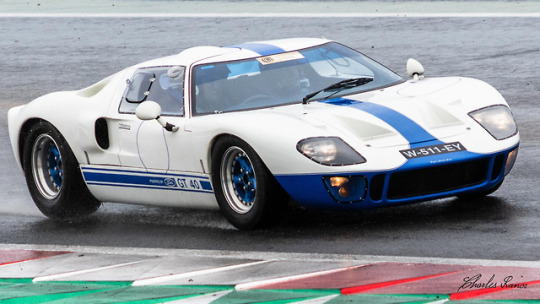
Ford GT40 Mk I
1 note
·
View note
Photo

me in a nutshell
#apex mirage#apex revenant#vigilante#me I myself#speedster#unholy beast#bmwi8#ford gt40#mustang deberti#koenigsegg agera rs1#halo 5#halo mk vi
3 notes
·
View notes
Text
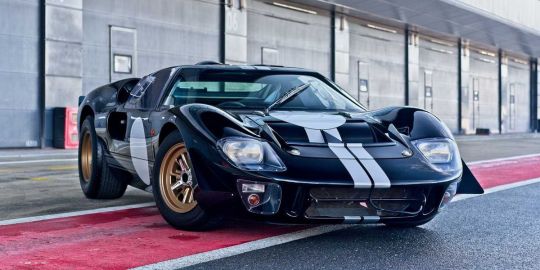
Del Ford GT40 se fabrican entre 1964 y 1969 un total de 107 unidades organizadas en series: MK I, MK II, MK III y MK IV. Luego vendrán las innumerables réplicas y la reedición del siglo XXI, bautizada por los de Dearborn como Ford GT y la velocida del GT40 es velocidad máxima de 320 km/h y medias por encima de los 200 km/h el motor que tiene es EcoBoost de 3,5 litros y configuración V6 el precio es de Las unidades copias de taller tienen un precio de partida de 305.000 euros, incluidos impuestos. para mi es uno de los mejores carros del mundo.
7 notes
·
View notes
Text
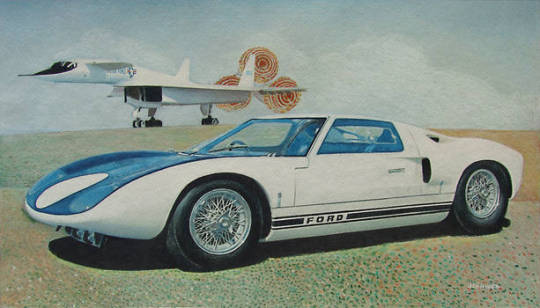
1967 Ford GT40 Mk I johnwickart collage
187 notes
·
View notes
Photo
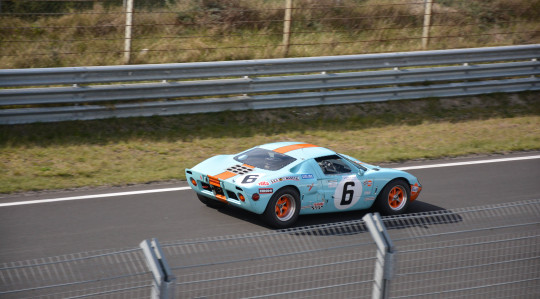
Ford GT40 (Mk I)
Image by Maurice van Gestel || IG
94 notes
·
View notes
Photo
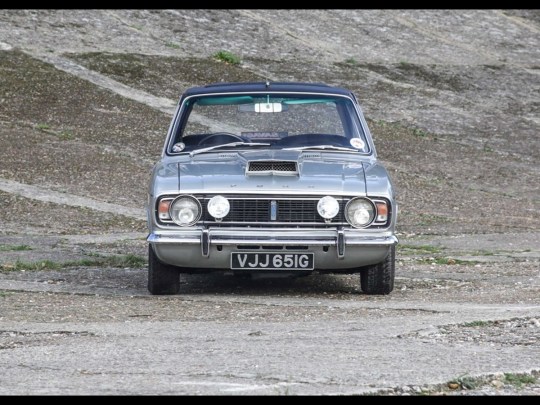
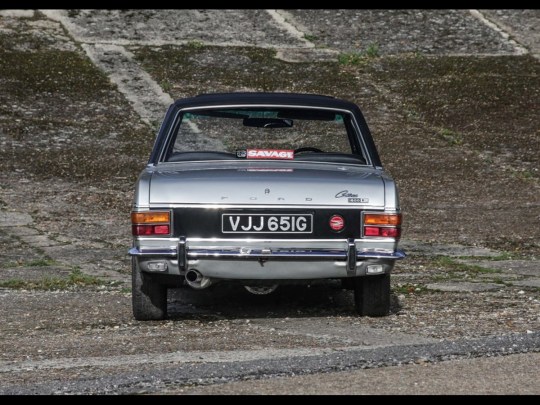

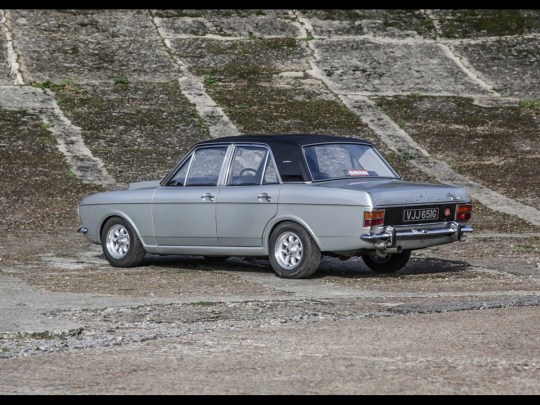




Ford Cortina Mk. II Savage (1969).
The Ford Cortina Savage was the incarnation of racing driver Jeff Uren and produced by his own company, Race Proven Limited, who took a Ford Cortina saloon and ‘shoehorned’ the Essex V6 three litre engine into the vehicle. Jeff Uren had raced for and managed the Ford Works team before joining the Willment race team, which fielded Ford Falcons, Galaxies, Cobras, GT40s, and, most famously, the humble Cortina Mk. I. Uren was responsible for the development of the Willment Sprint GT Mk. I Cortina. The gearbox was taken from the Ford Corsair 2000E. Weber carburettor, uprated brakes, electric cooling fan, differential, dampers, additional fuel tank and exhaust were all modifications together with the dashboard, alloy wheels and badges made for this unique motor vehicle. The first car to have the Savage treatment (by dropping in a Ford 3.0 litre Essex V6 engine and re-engineering the suspension) was the Mk. II Cortina; this then progressed to Mk. IIIs, Mk. IVs and even a one-off Mk. V Cortina.
13 notes
·
View notes
Text

Evolution of a Legend: The Ford GT40's Origins in the Mustang-I
Before partnering with Lola on the GT Mk6 in August 1963, Ford's vision for the GT40 was heavily influenced by the sleek design of the Mustang-I. The prototype Ford GT's exterior was essentially based on the Mustang-I, showcasing a striking resemblance between the two. Notice the date on the picture.
As the project progressed, Ford opted to merge the best of both worlds. They took the redesigned Lola GT Mk6 chassis and wrapped the Mustang-I-inspired body around it, ultimately giving birth to the iconic Ford GT40. This fusion of design and engineering expertise would go on to create a racing legend.
TIMELINE:
October 7, 1962 - Mustang at Watkins Glen
October 20, 1962 - Mustang at Laguna Seca
October 26, 1962 - Lola Mk6 showed up incomplete at the London Car Show
January 1963 - Lola Mk6 first shown at UK Olympia Racing Car Show. Showed up three days late and incomplete
Feb 1963 - Enzo Ferrari sends Ford an offer
May 11, 1963 - The silver Mk6 was the first MK6 GT to be raced, entering two races in May of 1963
May 22, 1963 - Ferrari backed out of deal w/Ford
June 1963 - High Performance and Special Models Operation Unit was formed and a basic design was made
June 12, 1963 - GT Program book, circulated internally on June 12th, just 21 days after Ferrari ended deal
June 19, 1963 - the first GT40 clay model is photographed
July 1963 - Advanced Concept Department- Special Vehicle Activity (SVA) was formed
July 1963 - initially models were wind tunnel tested
July 4, 1963 - HFII was planning to be in Maranello signing a $10 million contract with Enzo Ferrari that would give Ford Motor Co. half the Italian sports car manufacturer
July 12, 1963 - full size clay model is pictured next to Corvette and Jaguar
July 17, 1963 - The decision to go with a european firm was approved
July 1963 - a selection of vendors was made by the end of July
August 1963 - a workshop was established in Broadley’s garage in Bromley, south of London
August 1963 - two Lola Mk6 were tested by Ford till early November
September 1963 - FAV opens in Slough, England
September 1963 - the center of activity was therefo removed from Dearborn to England, together with a nucleus of Ford engineers, car layouts, power pack components and full-size models.
October 4, 1963 - a Ford GT clay model is photographed outside at Ford's Design Studio in Dearborn
Oct 1963 - Design engineers were sent to England in mid October
October 23, 1963 - a Ford GT body is photographed outside with a Ford stripe on the rocker
Nov 1963 - The final shape models were sent to England in early November
Nov 1963 - Component testing was completed by the end of November
March 16, 1964 - first gt40 delivered
April 1st, 1964 the first prototype Ford GT was completed and photographed. The first 12 "prototype" vehicles carried serial numbers GT-101 to GT-112. Production GT40s Mk I and Mk II began with GT40P/1000.
April 15 , 1964 - GT40 time trials in Le Mans in mid-April,
After disappointing race results, the engineering team was moved in 1964 to Dearborn, Michigan, USA, to design and build cars by its advanced developer, Kar Kraft.

69 notes
·
View notes
Text
Team Orders: The Dirty Little Secret of Motorsports
In most team sports, your entire team either loses, wins, or draws. There isn't a state where some of your team wins and some of your team loses. Whilst in individual sports, it's you versus everyone else, so your job is pretty simple. Motorsports, however, exists in an awkward middle ground: you are both part of a team, and you are competing for individual glory.
This can meltdown in one of two ways. The first is when individual glory prevails over playing the team game, such as the Ayrton Senna and Alain Prost crash at Suzuka 1989, or the various Lewis Hamilton and Nico Rosberg collisions, most prominently at Spain 2016. Then there's the other way: when the team prevails over individual glory.
The team orders.
This last weekend we saw team orders come into play as Oscar Piastri was leading the Hungarian Grand Prix, but McLaren pit second placed Lando Norris early to cover off any potential threat from Lewis Hamilton. This was an odd move as Lewis wasn't really all that close to either McLaren at this point, and the undercut gave Lando a massive advantage over Oscar.
Oscar Piastri pits two laps later and comes out in second. The gap widens to about six seconds, and McLaren spends the next chunk of the race trying to tell Lando to be a good teammate and let Oscar by in the end. McLaren started with light requests, then told Lando to remember the team, and eventually just started guilt-tripping Lando into giving up second.
Lando eventually lifted off on the straight, let Oscar pass, and Piastri took his first Formula One Grand Prix victory.
Now, Lando got the pole and was clearly the faster car at the end of the race, however, Piastri got the lead off the start, pulled away, and was in the lead when McLaren decided to pit Lando first. Really, I think the biggest problem is that McLaren decided to pit Lando first despite the fact that everyone could see that fresh tyres were a massive advantage at the Hungaroring.
Still, it's clear that Lando didn't particularly want to move over, and it's clear that McLaren was pretty desperate to get him to let Oscar by.
The big lift off the straight necessary to let Piastri by is also somewhat of a statement, Lando was making a point over how choreographed this switch was.
So, the team made the strategy call that flipped the order and made the drivers flip it back despite the fact that Norris didn't particularly seem to want to.
Where does that leave this case in comparison to a few other famous cases of team orders?
Well, one of the most famous examples is from the 1966 24 Hours of Le Mans, where - as seen in the movie Ford vs. Ferrari - where Ken Miles and Denny Hulme's #1 Shelby American Ford GT40 Mk. II was leading from the #2 sister car of Bruce McLaren and Chris Amon. In third - albeit twelve laps down - was another GT40 Mk. II, the #5 Holman & Moody car of Ronnie Bucknum and Dick Hutcherson. Ford man Leo Beebe ordered the three cars to finish in a dead heat for the photo opportunity.
Miles in the #1 car slowed down to let the #2 catch up, and Ford got their photo finish. The only problem was that McLaren and Amon finished a nose ahead, on top of the traditional part of the story where they started a further two spots behind the #1 and therefore traversed a greater distance.
The commonalities between this and Hungary 2024? Well, the lead car was ordered to slow down and that led to the car in second place taking the victory.
Then in the late 1990s into the 2000s, we got a slew of controversial team orders in Formula One, which eventually culminated in team orders getting banned.
First comes the 1997 European Grand Prix at Jerez, where, after the championship deciding crash between Jacques Villeneuve and Michael Schumacher, Schumacher is out of the race, out of the championship hunt, and will soon be disqualified from the 1997 season altogether, while Jacques is limping his car home, currently in the lead.
However, Williams then tells Jacques to let the McLarens of Mika Hakkinen and David Coulthard through. Jacques thus finished third, narrowly ahead of fourth placed Gerhard Berger. Now, it made sense for Jacques to let the faster McLarens through since he only needed a single point to match Michael and then beat him on countback, or two to beat him outright. First was worth 10, third was still worth 4.
The thing is that Williams and McLaren actually had an arrangement where, if McLaren helped Williams - or at least didn't get in their way - then Williams would help McLaren, so it wasn't just a matter of Jacques protecting his car, he was ordered to let the McLarens by.
To add fuel to the fire, McLaren had used team orders in that very race already, as Hakkinen started ahead at Jerez only to wind up behind Coulthard on pit strategy, something McLaren "fixed" with team orders, in a case very similar to Hungary 2024.
Also similar was the very next race, Australia 1998, where Hakkinen had some sort of radio mishap - accounts vary from him mishearing something to someone outright tapping McLaren's comms to call Mika in - went through the pits and emerged behind Coulthard. Ron Dennis again used team orders to correct an issue that came out of pit lane.
Also in 1998 was the Jordans at Spa, which I talked about in last week's blogpost. There, in treacherous wet conditions, Jordan ordered Ralf Schumacher to stop catching teammate Damon Hill and remain in second place, conserving the team's first 1-2 finish on the stormy day.
Now that I've established Williams, McLaren, and Jordan were all doing this stuff too, let's get to the name synonymous with team orders in this period: Ferrari.
First was a rather understandable case: the 1999 German Grand Prix, where Mika Salo - filling in for Michael Schumacher who broke his legs at the British Grand Prix earlier that year - was ordered to let Eddie Irvine by for the win. Mika Salo was just the fill in driver, Eddie Irvine was competing for the championship, and championship rival Mika Hakkinen crashed out after a tyre failure, so this was a ten-point gain for Irvine. All of that made sense.
What made less sense was Austria 2002, where coming onto the start-finish straight for the final time, Rubens Barrichello lifted off big time to let Michael by and allowed Schumacher to take his fifth win of the season - fourth in a row - in just the sixth race of the season. Yeah...it was not particularly necessary...and the fans let Ferrari know by booing the podium.
Even Michael didn't seem proud of it, as he let Rubens stand on the top step of the podium in his place.
The similarity to Hungary 2024? The big show of a lift to let the teammate past, though this was more dramatic given Rubens did it quite literally on the run to the line.
In the United States Grand Prix at Indianapolis at the end of that season, Schumacher would lift off and let Rubens finish alongside, which actually led to Rubens winning the race by 0.011 seconds. Schumacher and Ferrari have maintained that this was a botched photo finish, much like Le Mans 1966, but there has been a persistent theory that Michael was returning the favor for Austria earlier that season.
All of these incidents in quick succession and the growing controversy around them led to the FIA, after the 2002 season, banning the use of team orders.
So why were team orders allowed to happen in Hungary 2024?
Well, it turns out enforcing a ban on team orders is hard.
The crashgate scandal in 2008 - where Renault ordered Nelson Piquet Jr. to crash deliberately as Fernando Alonso was coming to the pits to bring out the safety car - was revealed in the summer of 2009.
Then in the 2010 German Grand Prix, we have the famous "Felipe, Fernando is faster than you, confirm you understood the message" case, where Massa was ordered to let Fernando by for the championship.
These two incidents led to the FIA conceding that they weren't actually able to police team orders, so as much as they would ban Briatore and Symonds on the Renault front and fine Ferrari, neither race result was overturned. The team orders ban was gone after the end of 2010, having only lasted eight seasons.
So team orders are now legal again, and the case of Multi-21 from the 2013 Malaysian Grand Prix is the most famous example. Sebastian Vettel was ordered to remain behind Mark Webber, refused, and overtook the Australian to take the win. For what it's worth, Mark Webber is Oscar Piastri's manager. Multi-814 doesn't quite have the same ring to it though.
Disregarding team orders and taking the win is something a lot of people have suggested that Lando should've done, that yielding proves he doesn't have the ruthless edge to be a championship caliber driver.
On the other hand, McLaren's team radio to Lando insisted that Lando and Oscar have helped each other countless times and they'll need each other's help to win the championship. Multi-21 was in Vettel and Webber's last year as teammates and there's always been the suggestion that Vettel refusing to yield is part of the reason why Mark retired.
Lando and Oscar are both young and quick, they can both be with McLaren for a long time provided Zak Brown can keep his lust for young drivers in check, so maybe Lando yielding to Oscar was the right call.
Time will tell if giving the position in the end was enough, or if all the will-he-or-won't-he itself will ensure Piastri won't be as trusting of Norris in the future.
Always in motion the future is.
21 notes
·
View notes
Photo
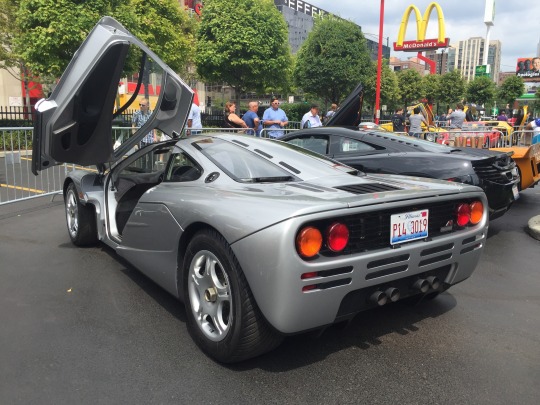

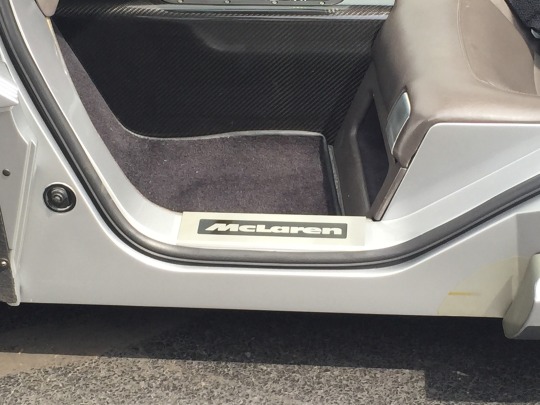

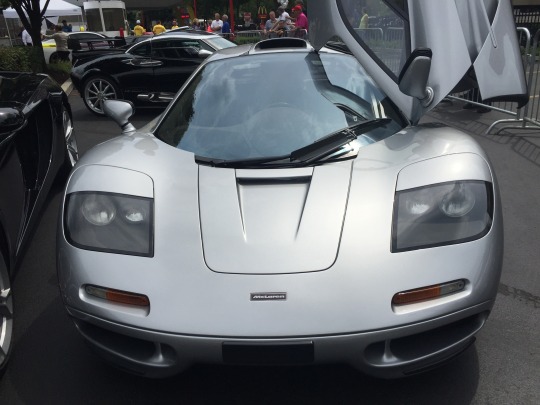




This was the keystone of Icons of the Road for me. This was an absolutely incredible show, and I didn’t even take pictures of every car there. To recap, the exciting cars of the show for me were... Bugatti EB110 Bugatti Veyron Grand Sport Vitesse Original 427 Cobra Original Shelby GT350R 2005 Ford GT Ford GT40 Mk I Porsche 959 Porsche Carrera GT Porsche 918 Spyder BMW M1 BMW 507 BMW Z8 DeTomaso Mangusta DeTomaso Pantera Ferrari F40 Ferrari 458 Speciale Ferrari 512 BBi Ferrari 288 GTO Ferrari 365 GTB/4 Daytona Lamborghini Murcielago LP650-4 Roadster Lamborghini Countach LP400 Periscopio Mercedes C11 Mercedes SLR McLaren Maserati Tipo 61 Birdcage Spyker C8 Laviolette Mosler MT900S Jaguar C Type Jaguar XJ220 McLaren M8A Can-Am
But the real headliner for me was this stunning McLaren F1. This car is chassis #001, and was the third F1 built. I saw my first F1 early in 2015, also in silver, and then this F1 at Icons of the Road in August of the same year. I caught a very quick glimpse of an F1 LM a few years later, but I haven’t had a proper chance to drool over an F1 since this car.
#mclaren#f1#mclaren f1#goat#greatest of all time#gordon murray#cars#car show#car spotting#cars and coffee#contentcreator#icons of the road#supercars#90s supercars#cars of tumblr#supercars of tumblr#classic cars of tumblr#cars of chicago#photography#automotive photography#supercar photography
29 notes
·
View notes